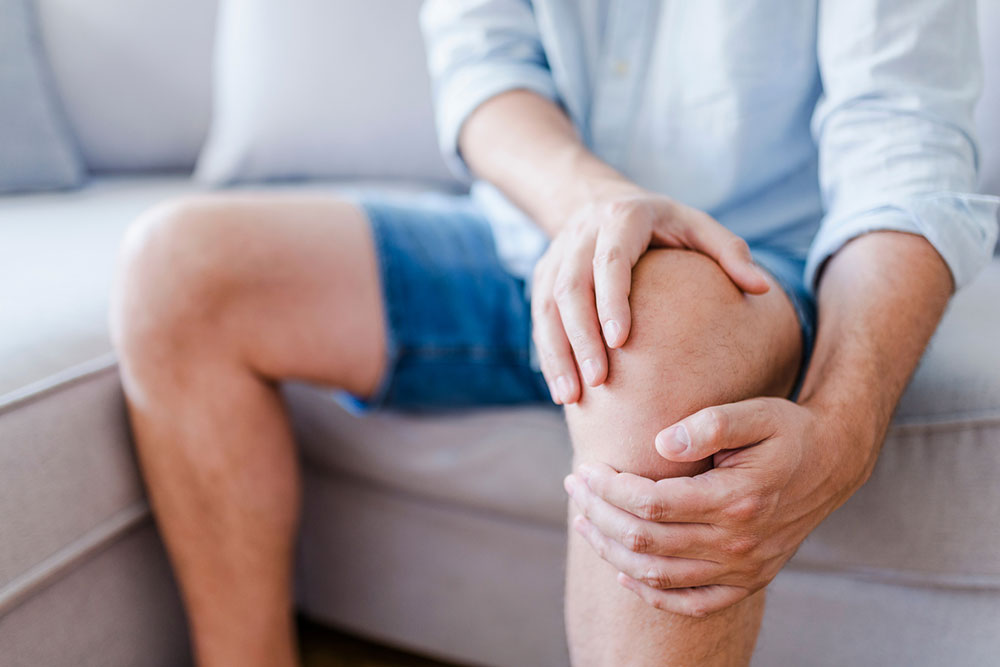10 early warning signs of arthritis

Arthritis is the inflammation or swelling of one or more joints. It encompasses over 100 conditions that affect the joints, tissues around the joint, and other connective tissues. The symptoms of arthritis may vary depending on its type. However, it is essential to identify the symptoms of the disease at the earliest possible time to help one carry on with daily tasks. Here are some common warning signs of arthritis to help with the diagnosis:
1. Numbness and tingling sensation
One of the most common signs of arthritis is a numbing and tingling sensation in various joints of the body. The sign is commonly caused by rheumatoid arthritis, which results in swelling of various nerves. Therefore, someone with the condition might experience tingling, burning, or a numbing sensation in various parts of their body, including the hands. One should get themselves checked if they are diagnosed by a healthcare professional and treated at the earliest possible time to improve one’s quality of life.
2. Crepitus
The term refers to creaking, grinding, popping, or crunching sounds that may come from a moving joint. The sign is usually common in people as they age, but it could happen to anyone at risk of arthritis. The most common types of diseases that may cause crepitus are rheumatoid arthritis and osteoarthritis. The condition causes the specific joint’s articular cartilage to degenerate, leading to an unusual sound when the area is moved.
3. Pain in the groin region
For various reasons, one may experience pain around the groin, including a pulled muscle, tendon, or ligament in the leg or injuries. Even a hernia might result in such a painful sensation. But if none of these exist, one should look for signs of arthritis. Several people might have hip arthritis, which damages the cartilage in the hip region. The pain that follows usually radiates to the groin. Moreover, the sensation could hamper one’s mobility, interfering with one’s ability to participate in daily activities.
4. Pain in the joints
An individual may experience joint pain due to several factors, including injuries and other environmental factors. The pain may also result from infections like the flu. If joint pain occurs without any underlying causes, it might indicate the development of arthritis. This pain might not fade away and get worse with time. One may experience painful sensations even with mild activity, while others may notice it after completing work or a long day outdoors. Joint pain may also lead to tenderness, triggering severe pain even if mild pressure is applied to the affected area.
5. Stiff joints in the morning
People who have arthritis might notice their joints becoming relatively stiff in the morning. While the joints might be stiff when the person wakes up, they might become more flexible after some activity at the start of the day. This fading of the symptoms makes it easy to overlook the possibility of arthritis. One method of diagnosing the symptom is to take note of the duration of the stiffness. If it persists for more than 30 minutes, it might indicate the onset of arthritis. Further, the stiffness of joints in the morning might commonly be felt in the wrists, hands, and feet.
6. Symmetrical joint pain
People can identify the signs of arthritis if they have symmetrical joint pain. For instance, when one injures themselves on a left joint, they may notice pain, swelling, stiffness, and other symptoms only on that side. But if there is no injury and one still develops pain in one of their joints due to arthritis, they will likely experience symmetrical sensations in the other joint. The symptoms often stem from rheumatoid arthritis and must be diagnosed by a healthcare professional immediately.
7. Fatigue
One of the most common yet overlooked signs of arthritis is fatigue. The symptom occurs if one is exhausted from work or excessive physical activity. It may also result from a lack of proper sleep. However, if there are none of these signs, one ought to check with an expert about potential indicators of arthritis. The disease causes inflammation in various joints, while the body uses more energy to reduce it. As a result, one may feel fatigue and tiredness more often than usual, even if they always indulge in that particular activity. Fatigue may also hamper one’s ability to participate in daily routines, interfere with their relationships, and hamper productivity at work. Therefore, one must speak with an expert if they experience the symptoms.
8. Swollen, red joints
Arthritis may also result in symptoms like a reddish appearance around the affected joints. The color change might be due to the expansion of blood vessels in the surrounding skin, triggered by joint inflammation. Further, a wider blood vessel results in increased blood flow and makes the joints appear red in nature. Before the onset of this symptom, one may experience warmth in the joints.
9. Fever
An individual may develop a fever for various reasons, including infections like the cold or flu. However, there are instances when arthritis might trigger a fever. One should note that a fever is an immune response to fight off viruses by raising the body’s temperature. In the case of arthritis, one may develop a fever to fight off inflammation and joint pain potentially caused by rheumatoid arthritis.
10. Reduced range of motion
Arthritis causes inflammation of the joints, which may result in the deformation of various tendons and ligaments. If left unchecked, the disease may worsen, and the deformed areas might hamper one’s range of motion. For example, someone with severe arthritis might find it tedious and sometimes impossible to bend and straighten some of the joints in their body. While treatments could help manage the reduced range of motion, one could also try gentle exercises to improve movement.









